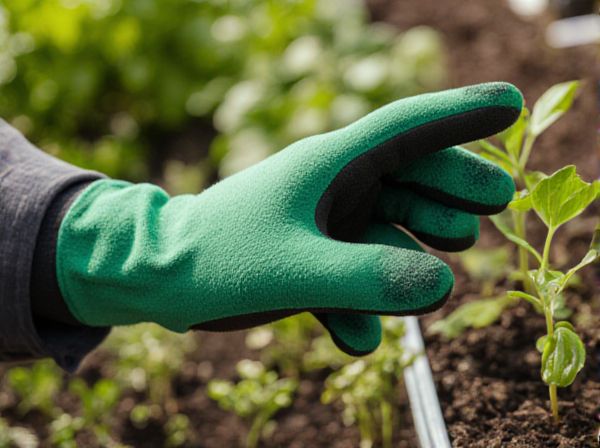
Square Foot Gardening vs Traditional Spacing Illustration
Square Foot Gardening maximizes yield by planting crops in dense, organized grids that reduce wasted space and improve soil management compared to Traditional Spacing, which leaves larger gaps between plants. This method allows for easier access, better pest control, and efficient use of water and nutrients within a confined area. Gardeners benefit from faster growth cycles and higher productivity with Square Foot Gardening, making it ideal for small spaces and urban settings.
Table of Comparison
| Aspect | Square Foot Gardening | Traditional Spacing |
|---|---|---|
| Planting Method | Divides garden into 1-foot squares for dense planting | Plants spaced according to individual species' recommended distance |
| Space Efficiency | Maximizes yield in small areas | Requires larger area due to wider spacing |
| Soil Management | Uses raised beds with custom soil mix | Typically garden beds or open soil |
| Water Usage | Conserves water through close plant spacing | Higher water requirement due to spread out plants |
| Maintenance | Less weeding and easier harvesting | More frequent weeding and longer harvest time |
| Ideal For | Small spaces, urban gardens, beginners | Larger spaces, traditional gardeners, crop rotation |
Introduction to Square Foot Gardening and Traditional Spacing
Square Foot Gardening maximizes yield by dividing growing areas into precise one-foot sections, allowing gardeners to plant densely but efficiently with minimal waste. Traditional Spacing follows conventional row planting methods, giving each plant ample room based on species-specific spacing guidelines to promote growth and airflow. Comparing both, Square Foot Gardening optimizes space for urban or small gardens, while Traditional Spacing suits larger plots needing less intensive management.
Key Principles of Square Foot Gardening
Square Foot Gardening maximizes yield by dividing garden beds into one-foot squares, each dedicated to specific plants, optimizing space and reducing waste. This method emphasizes intensive planting with nutrient-rich, well-draining soil mixes, promoting healthier plant growth and minimizing weeds. Precise spacing supports higher productivity per square foot compared to traditional row gardening, which often leaves unused soil areas.
Core Concepts of Traditional Spacing Methods
Traditional spacing methods in gardening rely on fixed distances between plants, typically based on species-specific requirements to ensure adequate sunlight, air circulation, and nutrient availability. This approach emphasizes row planting with measured intervals, commonly using feet or inches, to maximize growth potential and reduce competition among edible crops. Unlike Square Foot Gardening, traditional spacing often results in larger garden footprints and may require more soil preparation and maintenance.
Space Efficiency: Maximizing Garden Yields
Square Foot Gardening maximizes space efficiency by utilizing a grid system that allows for intensive planting, which significantly increases yield per square foot compared to traditional spacing methods. Traditional gardening often leaves unused space between rows, reducing the overall productivity of the garden area. By planting crops closely in a controlled layout, Square Foot Gardening optimizes nutrient use, reduces weeds, and enhances growth, making it ideal for gardeners aiming to maximize garden yields in limited spaces.
Soil Preparation and Maintenance Differences
Square foot gardening maximizes soil efficiency by dividing planting areas into one-foot sections filled with a nutrient-rich, well-draining soil mix composed of compost, peat moss, and vermiculite, allowing for precise soil preparation and reduced weed growth. Traditional spacing requires larger rows with native soil, often needing more frequent tilling, fertilization, and weed management due to greater soil disturbance and less concentrated nutrient distribution. Maintenance in square foot gardening typically involves targeted watering and minimal cultivation, while traditional garden beds demand consistent soil aeration and broader pest control efforts to maintain plant health.
Watering and Irrigation Comparison
Square foot gardening maximizes water efficiency by concentrating plants in smaller, well-maintained plots, reducing evaporation and runoff compared to traditional row spacing. Drip irrigation systems integrated into square foot gardens deliver precise moisture directly to plant roots, minimizing water waste and promoting healthier growth. In contrast, traditional spacing often requires broader irrigation coverage, leading to higher water consumption and less targeted hydration.
Pest and Weed Management in Both Methods
Square foot gardening offers dense planting that naturally suppresses weeds and reduces pest habitats by minimizing exposed soil and improving plant diversity. Traditional spacing, with wider gaps between plants, often requires more frequent manual weed removal and targeted pest control due to increased soil exposure and lower plant density. Pest and weed management in square foot gardens benefits from efficient space utilization, promoting healthier crops with fewer chemical interventions compared to traditional methods.
Cost Effectiveness: Materials and Time Investment
Square Foot Gardening significantly reduces material costs by using fewer supplies such as soil, compost, and mulch compared to traditional spacing methods that require larger planting areas. This method also minimizes time investment through easy maintenance and efficient watering, allowing gardeners to maximize edible yield per square foot with less labor. Traditional spacing demands more physical space and resources, increasing both upfront expenses and ongoing maintenance time.
Suitability for Different Edible Crops
Square foot gardening maximizes space by dividing beds into one-foot sections ideal for small, high-yield crops such as lettuce, herbs, and radishes. Traditional spacing uses wider rows suitable for larger plants like tomatoes, corn, and pumpkins that require extensive root systems and airflow. Crop suitability in edible gardening depends on plant size, growth habit, and density needs, making square foot gardening perfect for compact, fast-growing vegetables and traditional spacing better for sprawling or heavy feeders.
Which Method is Best for Your Edible Garden?
Square Foot Gardening maximizes yield by planting crops in densely packed one-foot squares, making it ideal for small spaces and intensive edible garden production. Traditional Spacing allows for wider gaps between plants, promoting airflow and reducing disease risk, which benefits larger gardens with more room. Choosing the best method depends on garden size, crop variety, and desired productivity for your edible garden.
Square Foot Gardening vs Traditional Spacing Infographic

 gardendif.com
gardendif.com